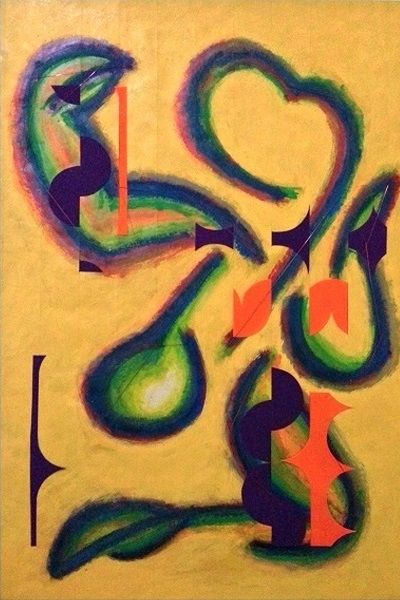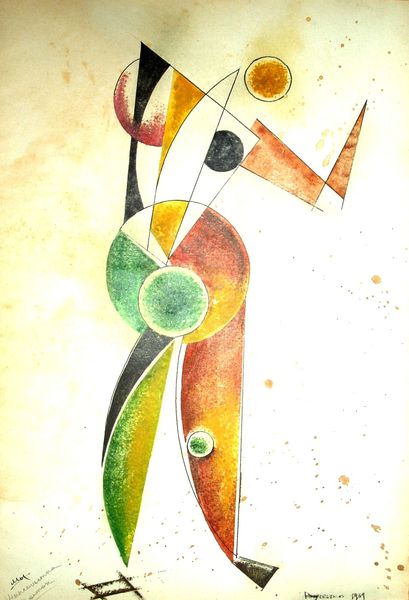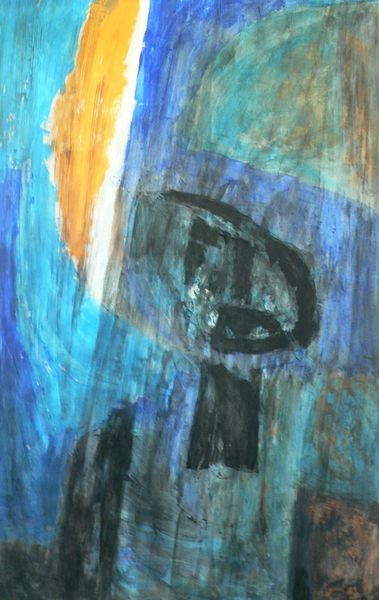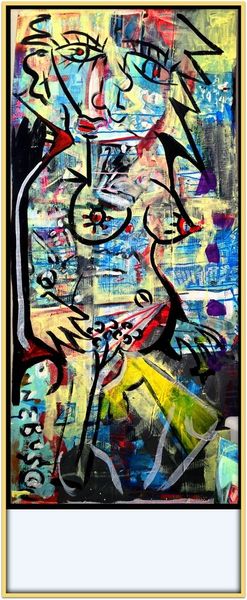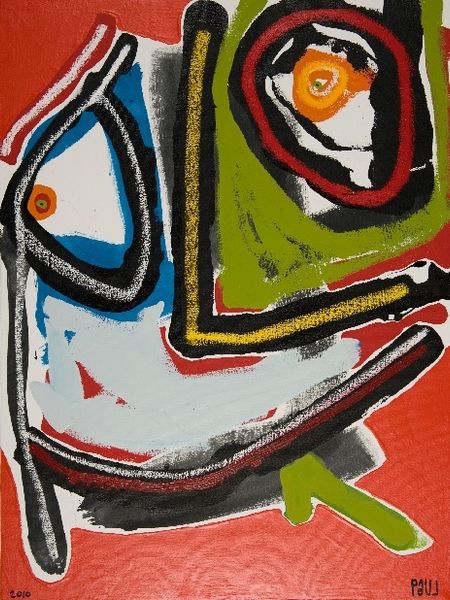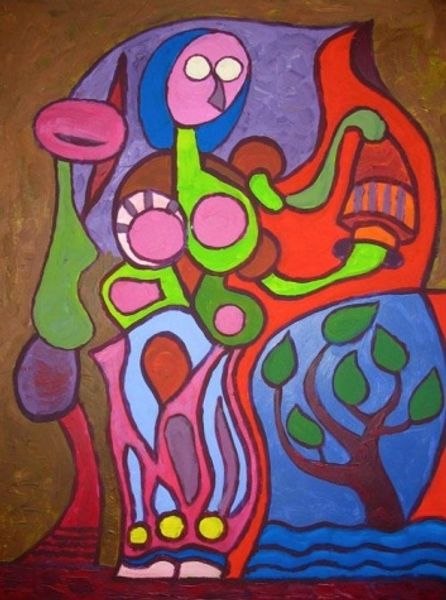
painting, acrylic-paint
#
abstract-expressionism
#
self-portrait
#
painting
#
acrylic-paint
#
painted
#
form
#
acrylic on canvas
#
geometric-abstraction
#
abstraction
#
line
#
modernism
Copyright: Tihamer Gyarmathy,Fair Use
Editor: Let's take a closer look at Tihamer Gyarmathy's "Self Portrait," created in 1950 using acrylic paint. I'm struck by how minimal it is, almost like a blueprint of a face. It feels very introspective. What do you see in this piece, beyond the surface? Curator: It's interesting that you use the word "blueprint." Looking at this work through a historical lens, particularly the socio-political climate of the mid-20th century, the deconstruction of form feels significant. The self, especially after the World Wars, was being questioned, fragmented. Does the starkness speak to the artist's identity in relation to a world in turmoil, do you think? The green is interesting, almost a pallor. Editor: That makes a lot of sense. The fragmentation could reflect a loss of innocence, or maybe a challenge to traditional portraiture. Do you see the abstract style as a rejection of something, a conscious decision? Curator: Absolutely. Consider the rise of abstract expressionism as a direct challenge to established artistic and social norms. Gyarmathy, through his use of geometric abstraction and line, could be interpreted as dismantling conventional notions of identity. It's like he's saying, "I am more than just a face." Also, are there any possible connections here to what was happening behind the Iron Curtain at the time? What are your thoughts? Editor: It is interesting how artists re-invented art using geometric forms and simple color schemes under these political systems. I hadn’t considered that before. It gives the artwork an even stronger layer of meaning. Curator: Precisely! It challenges us to move beyond simply admiring the aesthetics and contemplate the complex dialogue between art, artist, and socio-political reality. Editor: This has definitely shifted my perspective. I came in thinking about form, but now I'm thinking about context and resistance. Thanks for enlightening me. Curator: It’s been enlightening for me, too. I find the blending of visual components and art activism is fascinating. I believe we can all connect historical works of art with current social justice struggles and political conflicts to promote positive social change.
Comments
No comments
Be the first to comment and join the conversation on the ultimate creative platform.
